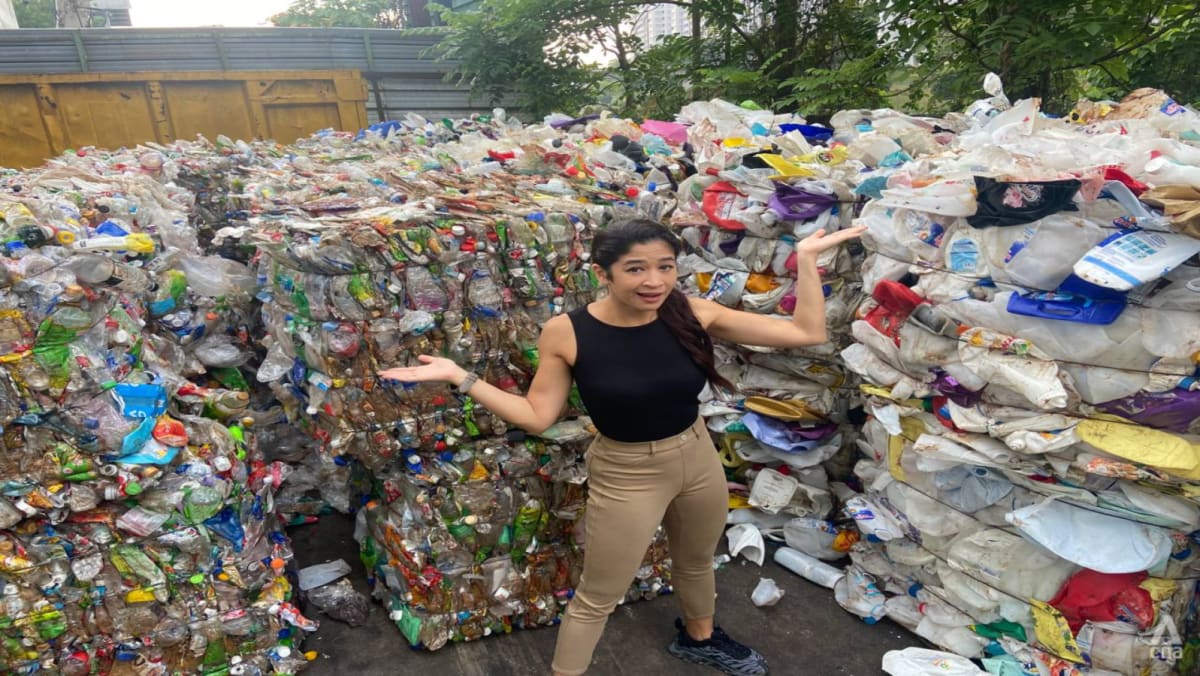
Some shopping centres in Singapore have segregated bins for different recyclable materials. But sustainability professional Kavickumar Muruganathan noted that shopping centres are typically projects initiated by large developers with sustainability and environmental ambitions.
Scaling up such a system on a national basis can only come with “more resources”. “You need to buy compartmentalised bins for that and … also do the labelling,” said Kavickumar, an NUS College of Design and Engineering adjunct lecturer.
“A year or two could be the duration you’re probably looking at, or sometimes even longer if it’s hard to find those relevant materials to create the system. So we’re not likely to see that in the near future.”
The NEA is not doing away with commingling, however.
The current system “helps to reduce the number of truck trips needed” in the collection process and thus “creates fewer carbon emissions” as well as lessens the collection costs, cited Christopher Tan, the director of the NEA’s sustainability division.
The agency is looking to “encourage everyone to recycle right” instead. The “issue at hand” is not the commingling “in itself”, but rather the contamination — with the contamination rate at 40 per cent of the blue recycling bins — he said.
“The problem of contamination (arises) when people may not understand what can or can’t be put in the recycling bin.”
Four years have passed since the Recycle Right campaign was launched to help Singaporeans recycle correctly. Recently, as part of the campaign, recycling boxes known as Blooboxes were distributed nationwide to encourage families to set up a home recycling corner.
“That’s one form of a behavioural nudge,” said Tan. “The other behavioural nudge … is that (the Bloobox) tells people what should be recycled: paper, plastic, metal and glass. It also tells people what shouldn’t be recycled.”
A NOVEL SOLUTION?
There may yet be another solution to Singapore’s recycling problems, thinks Kavickumar. And it could lie with the karung guni men going from door to door collecting recyclable items such as newspapers, among other unwanted goods.
“They’re very good at bundling recyclables, doing that source separation without any contamination,” he said. “They also have linkages back to recyclers, so they ensure that the recyclables end up at the doorsteps of recyclers.”
According to a 2019 Eco-Business article, karung guni men collect almost nine times more than the national recycling effort. They should be given formal roles in waste management firms and recycling companies, suggested Kavickumar.
“They can be (sent) out to the different estates, helping to collect recyclables,” he said. “We’ll be basically seeing better segregation at source, and that’ll help to reduce a lot of contamination along the way.”
This view was echoed by second-generation karung guni man Bryan Peh, 30, who “seldom” has a contamination problem. “Because if (people) were to send me contaminated items, I’d pay them less,” he said.
Instead of going from door to door, he tends to be called to collect recyclable items from people’s homes. He also hosts collection sessions in the Tampines neighbourhood.
“When the people (bring) these items down, they’re already well sorted according to different types of materials,” he said. “When we buy all these items, we’re able to (pay) the market rate (for) each individual material.
“If (people) were to mix (items) together, we’d have to pay them at a lower rate.”
Nonetheless, an informal waste collection network like this must be “complementary to the recycling bins” and not replace them completely, according to NEA’s Tan.
“This is a manpower-intensive operation,” he said, adding that residents “will have certain times (when) they want to take their recyclables down”.
“I tend to take my recyclables down maybe at about 11 p.m. … It’d be very difficult to find a door-to-door collection that takes place at that hour.”

